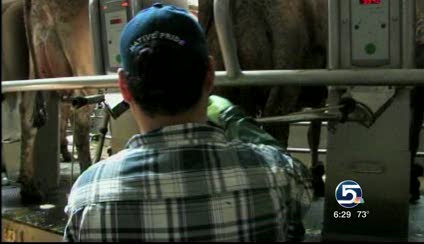Estimated read time: 2-3 minutes
This archived news story is available only for your personal, non-commercial use. Information in the story may be outdated or superseded by additional information. Reading or replaying the story in its archived form does not constitute a republication of the story.
OGDEN — This month has been the wettest May ever, with more than 5 inches of rain. Add that on top of the amount of snow we got during the winter, and you've got a recipe for disaster for agriculture.
We've got 300 to 400 acres that we won't be able to plant this year.
–Clint Wade, dairy farmer
#wade_quote
The Wadeland Dairy milks about 1,600 cattle, making it the largest in Weber County. But after five generations in the business, the owners are facing some major troubles.
"Hopefully that wouldn't be the thing that breaks us and makes it so we're not able to stay in business," dairy farmer Clint Wade said.
What Wade is talking about is acres of farmland, normally used to grow feed for cattle, now buried under water. "We've got 300 to 400 acres that we won't be able to plant this year," he explained.

That means the dairy farmers will have to buy that feed elsewhere, and that could cost them an additional $500 to $700 — enough to break the bank.
Luckily, Wade's cattle are on higher ground that he says won't likely get flooded. But other nearby farmers have moved their horses to prevent them from getting thrush — a disease that permanently damages their hooves.
"This is families that won't be able to make a mortgage payment. This is families that won't be able to make a farm payment," said Weber County Commissioner Kerry Gibson.
Also a dairy farmer, Gibson just finished moving about 100 cows from a now-flooded field. They're on higher ground, but the prime grazing land is gone.
Related:
"Most of the cropland that we grow the feed on for this dairy herd is under water," Gibson said. "And that just dramatically impacts our financial situation."
While the flooding could have a long lasting effect for farmers, consumers will likely feel the impact too with higher prices in the grocery stores.
Right now, local farmers are just hoping things won't get much worse later this summer.
"The dairy industry's been very tight for the past four to five years," Wade said. "There are many dairies that are already on the brink of going out, and something like this could be that last straw."
The good news is farmers say most of the cattle is now on higher ground, and it would take about another 4 to 5 feet of water before they have to move them out. If they had to do that, they say it would be disastrous. But right now looks very unlikely.
Email: manderson@ksl.com.











